Historic walrus database goes live, 160 years in the making
- Published
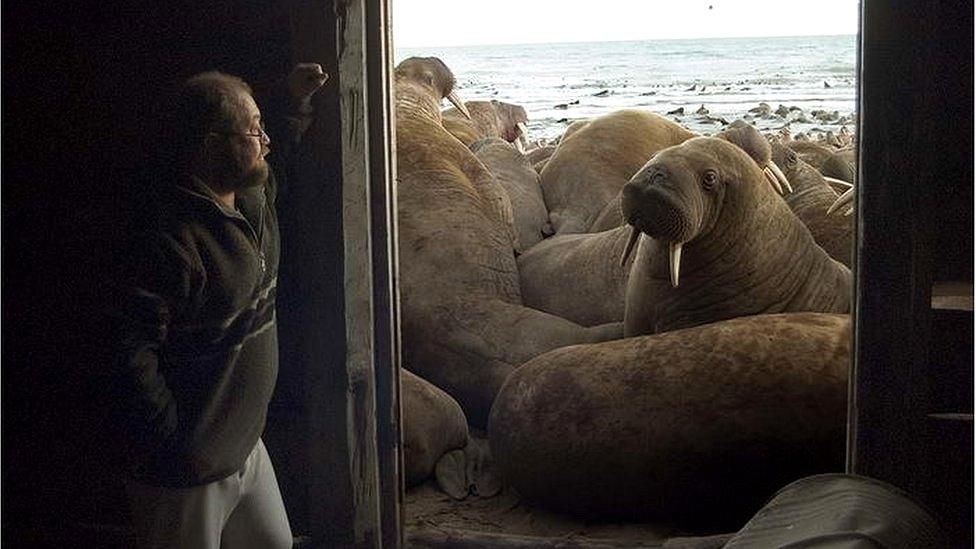
Anatoly Kochnev, the Russian biologist pictured here, spends up to four months a year studying walruses in one of the remotest parts of the world.
For 160 years, seafarers have braved polar bears, storms and bitter isolation to observe huge herds of walrus gathering off the coast of Alaska and Russia each summer.
For the first time ever, all records, from aerial surveys and island expeditions to 19th Century diary entries and maps by Russian explorers, have been compiled in a single database, external.
"People have died making these observations," said Anthony Fischbach, the leading biologist behind the project. "This has not come lightly. It's a price you pay for working in the remotest corner of the world."
Scientists hope their data, assembled by the US Geological Survey, will give policy-makers the information they need to protect walruses, approximately 95% of which live in the Bering Sea.
Since 2007, the sea ice that females rely on to raise their pups has declined dramatically in the region, in some cases completely failing to freeze over where it was once historically plentiful.
The US Fish and Wildlife Service are debating whether to list walruses as an endangered species.
They will make their final decision by October 2017.
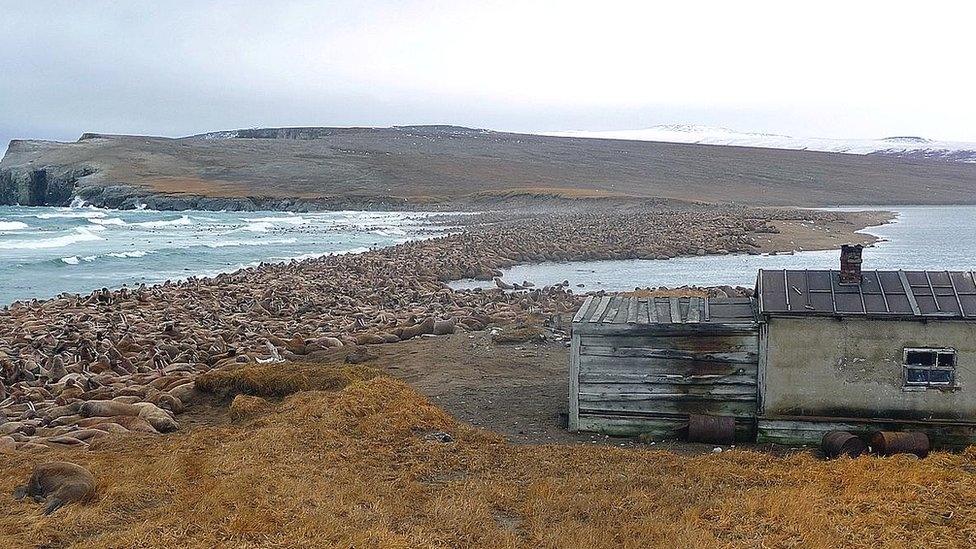
Studying walruses can be dangerous, involving weeks on remote islands or at sea in challenging Arctic weather conditions.
"Climate change poses several threats to walruses," said James MacCracken, biologist with US Fish and Wildlife Service.
"Loss of sea ice in summer opens up new areas for commercial shipping and oil and gas exploration. Acidification of the ocean is also a threat, due to CO2. It could potentially threaten their food source."
Walruses are predators and are known to occasionally eat seals, but the bulk of their diet is made up of clams and giant marine worms.
Male walruses migrate south from the Arctic and gather on land in their thousands each year, peppering windswept islands and coastlines in groups known as "haul-outs", external.
Amassing in large numbers is a social activity and a protection strategy, which helps the animals defend themselves from bear and killer whale attacks.
But haul-outs also make walruses especially vulnerable to human threats like oil spills and ship collisions. One strike could devastate an entire population.
The pacific walrus database, which was launched on 18 July, is an attempt to prevent such an event. It maps the location of every known haul-out, providing guidance for oil, shipping and natural gas regulators.
It can be viewed by the public through Google Earth.
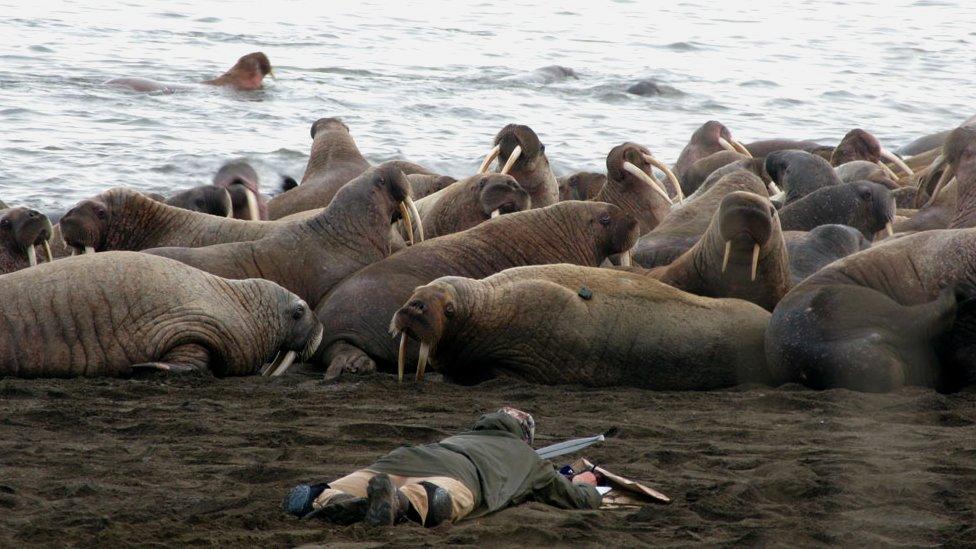
Walruses are harder to study then many other mammals because of their size and herding behaviour
A mixture of modern and archival research was used when building the database, beginning with an account from 1862 and a series of maps drawn by the Russian governor of what is now Alaska.
Ten years worth of recent studies have also been included, combining the work of the the Russian Academy of Sciences and their American counterparts.
Anatoly Kochnev, a Russian marine mammal biologist, spends between three and four months in the field studying the animals annually. His work brings him into contact with bears and biting weather conditions, which once left him stranded on a remote island in the Chukchi Sea for two weeks.
"In October and November it is stormy and snowy, but it's good for uncharted work," he said. With the help of local hunters, he remained well nourished throughout the course of his ordeal. "Walrus meat is good! Maybe once or twice I have killed one and eaten it."
For centuries, Native American and indigenous Russian peoples have harvested walruses for their ivory tusks and for food. To this day, at least 19 villages in Alaska continue to legally take a handful of animals for subsistence use each year.
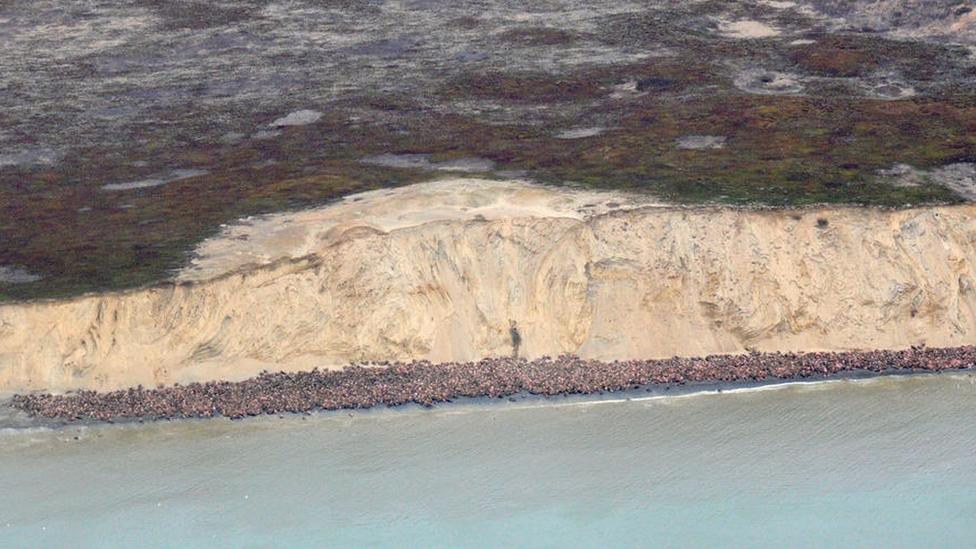
A haul-out of pacific walruses resting off the coast of Cape Grieg, Alaska

Walrus haul-outs
Some haul-outs involve over 10,000 animals
Almost all are formed by male walruses
The largest gatherings take place in northeastern Russia
A fully grown male pacific walrus can weigh close to 4,000 lb

The species are especially interesting to scientists because of their unique behavioural and bodily features.
Male walruses are able to inflate themselves, pumping air into a sack beneath their skin around their shoulder blades. They use this to rest at sea after feeding on the ocean bottom. When not inflated or paddling, they sink.
"It's quite amazing," said Mr Fischbach. "I've often gone out with walrus hunters and if one is shot and it rolls off the ice, into the water, it will just sink and you'll lose it."
Female walruses do not have a "lifejacket" adaptation, which restricts their ability to travel long distances at sea. Traditionally, they have avoided journeying to haul-out locations and remained on ice flows further north during summer months.
But with many areas melting, they are having to adapt their behaviour.
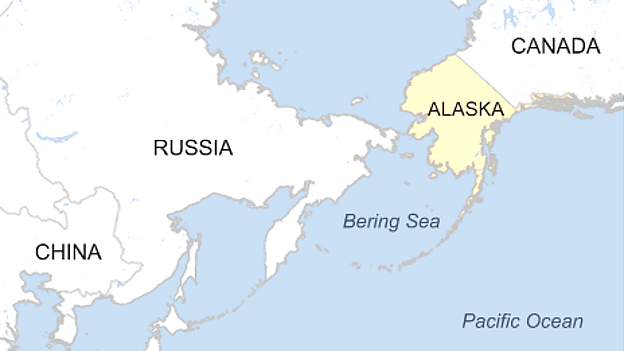
The Bering Sea is exceptionally shallow, which provides the perfect habitat
What will happen to female walruses as climate change progresses is one of the most pressing issues facing biologists in the Bering Sea. There are signs some females are beginning to form their own haul-outs along the coast, which is historically unprecedented.
The future health of the species is unclear.
"They aren't like zoo animals or medical patients where you can go out and weigh them," said Mr Fischbach. "We don't yet know if populations are declining or not."
Until scientists have a clearer idea how walruses are coping with climate change, they hope the new database will bolster their efforts to protect them.
